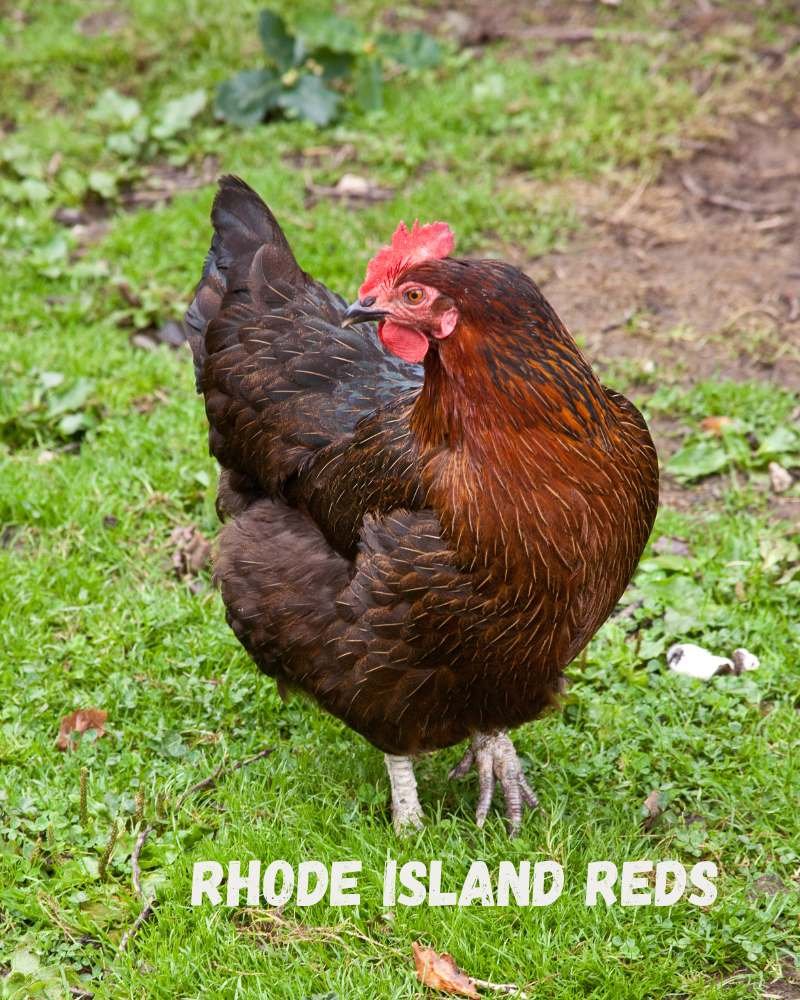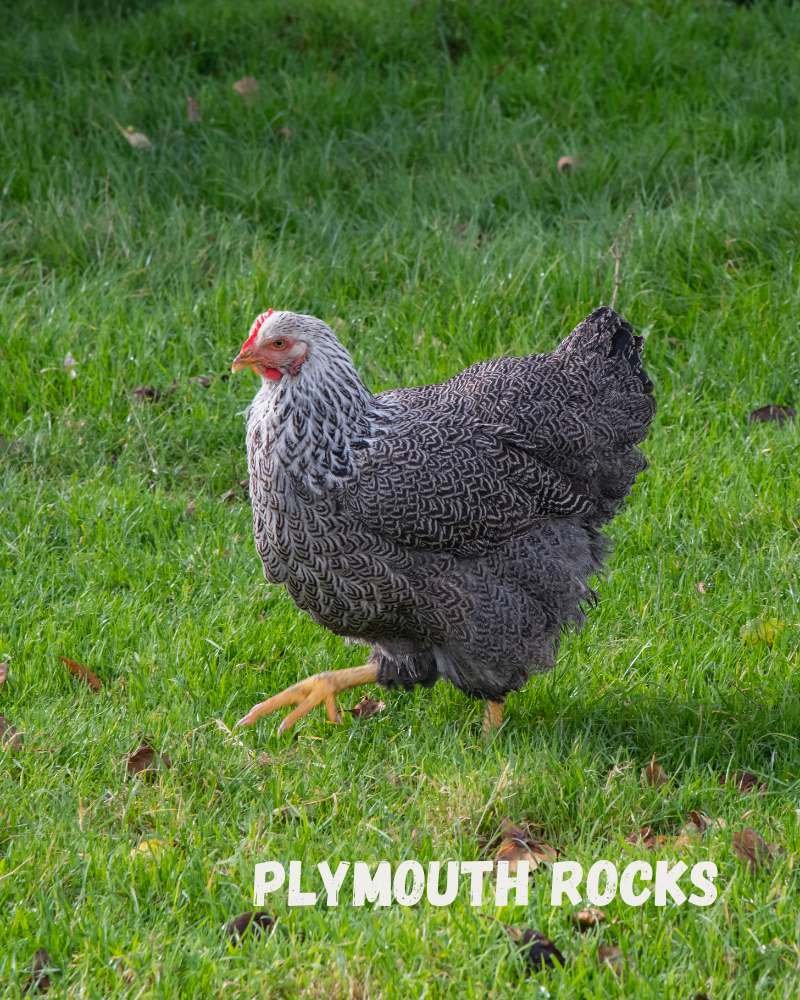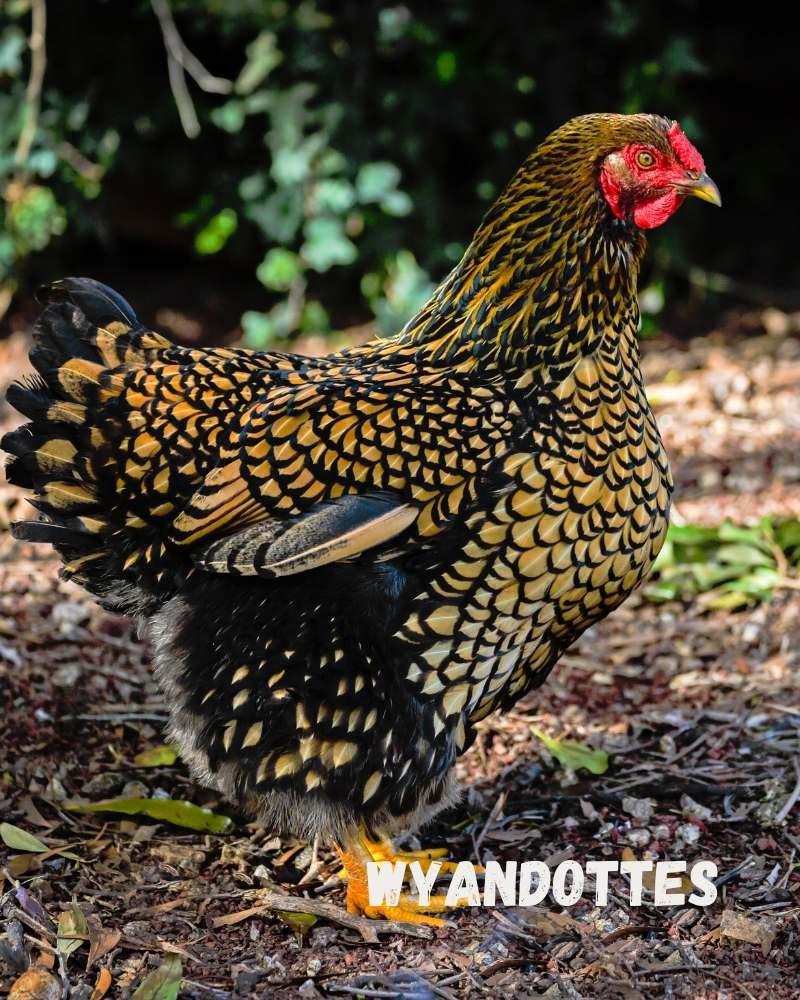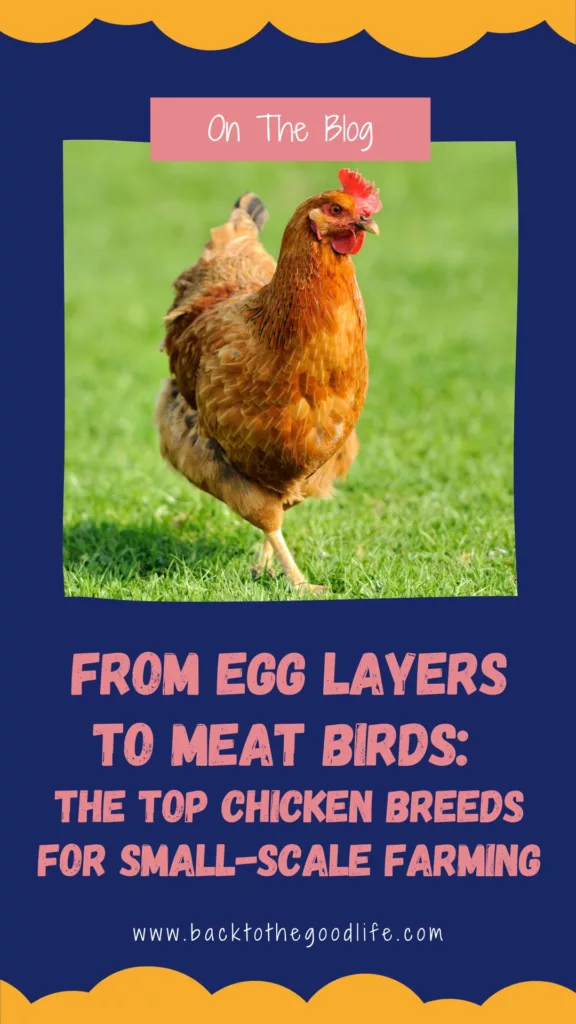From Egg Layers to Meat Birds: The Top Chicken Breeds for Small-Scale Farming
Just a heads up, this post contains some affiliate links. That means that we earn a small commission if you buy the product at no extra cost to you. That allows us to continue to research and share interesting articles with you. :)
Raising chickens on a homestead can be a rewarding experience for many reasons. They provide fresh eggs and meat, pest control, and help with garden fertilisation.

As a budding smallholder and homesteader myself, I can attest to the joy that comes with watching these feathered friends roam freely around. I was lucky enough to be a chicken keeper for many years before moving to the West Country, and we’re getting our allotment ready for chickens to join us right at this moment!
Not all chicken breeds are created equal, however, and it’s important to choose the right breed for your specific needs. Some are better suited to certain climates, purposes, or lifestyles.
In this article, we will explore the best chicken breeds for your homestead and what makes them stand out.
Choosing Your Chicken
If you’re looking for a chicken breed that can provide eggs, meat, and serve as a dual-purpose bird, the Plymouth Rock is a great option. While it’s not the best breed for any one of these purposes, it is a solid choice that can serve all three needs.
Plymouth Rocks lay around 200 eggs per year, making them a decent egg-laying breed. They are also good for meat production, with a mature weight of 7-8 pounds (2kg – 3.5kg roughly) .
Lastly, they are considered a dual-purpose breed, which means they can provide both eggs and meat. Overall, the Plymouth Rock is a versatile breed that can meet the needs of homesteaders who are looking for an all-around chicken breed.
Introduction to Chicken Breeds for Homesteads
Before diving into the best breeds, it is essential to understand the different chicken breeds.
There are three main categories of chickens: egg layers, meat birds, and dual-purpose chickens.
- Egg layers, as the name suggests, are known for their high egg production.
- Meat birds are bred for their meat production and grow quickly.
- Dual-purpose chickens are good for both egg and meat production.
The Best Egg-Laying Breeds

Leghorns
Leghorns are an excellent choice for homesteaders who prioritise high egg production. As the most common commercial egg-laying breed, Leghorns can lay up to 300 eggs per year.
They are a slender breed with a small comb, white earlobes, and white feathers. Leghorns are active birds that are well-suited for free-ranging.

Rhode Island Reds
Rhode Island Reds are a popular breed known for their egg-laying capabilities. They lay brown eggs and can produce up to 280 eggs per year.
Rhode Island Reds are hardy birds that are easy to care for and adapt well to various environments. They have red feathers, yellow legs, and a medium-sized comb.

Australorps
Australorps are a hardy breed that is easy to care for and can lay up to 250 eggs per year. They are black birds with a greenish sheen, and they have a medium-sized comb and red earlobes.
Australorps are excellent foragers and adapt well to a variety of climates.

Plymouth Rocks
Plymouth Rocks are a good choice for homesteaders who want a dual-purpose breed. They lay around 200 eggs per year and are also good for meat production.
Plymouth Rocks are friendly and calm birds that are easy to handle. They come in various colors, including barred, blue, buff, and silver.
The Best Meat Breeds

Cornish Cross
Cornish Cross chicken breeds are the most common meat bird in the United States. They are bred for their meat production and grow quickly, reaching a mature weight of 5-7 pounds (2.2kg -3.1kg) in just six weeks.
Cornish Cross chickens are white with yellow skin and a small comb.
Freedom Rangers
Freedom Rangers are another popular meat breed. They are known for their flavorful meat and ability to forage for food.
Freedom Rangers grow slower than Cornish Cross chicken breeds and reach a mature weight of 4-5 pounds (1.8kg – 2.2kg) in around 10-12 weeks. They have red and black feathers, yellow skin, and a red comb.

Delaware
Delaware chickens are a dual-purpose breed that is good for both meat and egg production. They can reach a mature weight of 4-6 pounds (1.8kg – 2.7kg).
Delawares are white birds with black feathers on their neck and tail, and they have a medium-sized comb.

New Hampshire Reds
New Hampshire Reds are another dual-purpose breed that is good for meat production. They can reach a mature weight of 6-8 pounds (2.7kg – 3.6kg) . New
Hampshire Reds are red birds with yellow legs and a medium-sized comb. They are active birds that are well-suited for free-ranging.
The Best Dual-Purpose Breeds

Buff Orpingtons
Buff Orpingtons are a popular chicken breed known for their friendly temperament and good egg and meat production. They can lay up to 200 eggs per year and reach a mature weight of 7-8 pounds (3.1kg – 3.7kg).
Buff Orpingtons are large birds with golden-buff feathers, pinkish-white skin, and a small comb.

Sussex
Sussex chicken breeds are also known for their friendly temperament and good egg and meat production. They can lay up to 250 eggs per year and reach a mature weight of 6-8 pounds (2.7kg – 3.6kg).
Sussex chickens have a medium-sized comb and come in various colors, including white, red, and speckled.

Wyandottes
Wyandottes are a hardy breed that is good for cold climates. They can lay up to 200 eggs per year and reach a mature weight of 6-8 pounds (2.7kg – 3.6kg). Wyandottes have a rose comb and come in various colors, including silver-laced, gold-laced, and black. They are friendly and calm birds that are easy to handle.

Brahmas
Brahmas are a large, gentle breed that is good for meat production. They can reach a mature weight of 10-12 pounds (4.5kg – 5.5kg). Brahmas are quiet and docile birds that are well-suited for confinement.
This chicken breed has a small pea comb and come in various colors, including dark, light, and buff.
Choosing the Right Breed for Your Homestead
When choosing a breed for your homestead, it is essential to consider several factors. The climate is one of the most critical considerations.
Some breeds are better suited for cold climates, while others are more heat-tolerant.
Available space is another important factor to consider. Some breeds do better in confinement, while others are well-suited for free-ranging.
Your personal preferences also play a role in selecting the right breed. Some homesteaders prefer docile and friendly birds, while others prefer birds that are more independent.
It is also important to consider the breed’s behaviour, such as their foraging ability and adaptability.
Why Chickens are a Good Start with Livestock for Smallholders and Homesteaders
If you’re new to homesteading or small-scale farming, chickens are a great place to start with livestock. Here are some reasons why:
Easy to Care For
Most chicken breeds are relatively low-maintenance compared to other livestock, such as cows or pigs. They require food and water, a clean living space, and protection from predators.
With some basic knowledge and a little bit of care, anyone can raise chickens.
Affordable
Chickens are one of the most affordable types of livestock to keep. They don’t require a lot of space, and their feed is relatively inexpensive.
If you live anywhere but the UK, you can even supplement their diet with kitchen scraps or garden waste.
Multi-Purpose
Chickens are multi-purpose animals that can provide eggs, meat, and pest control. By choosing the right breed, you can prioritize your needs and get the most out of your chicken breeds.
Educational
Raising chickens can be an educational experience for both children and adults. It teaches responsibility, patience, and the importance of sustainable living.
Connection to Nature
Raising chickens connects you to nature and the food that you eat. It’s a way to be more self-sufficient and understand where your food comes from.
Overall, chickens are a great starting point for smallholders and homesteaders. They’re easy to care for, affordable, multi-purpose, educational, and provide a connection to nature.
How to Introduce New Chickens to an Existing Flock
Adding new hens to an existing flock can be difficult. Most chicken breeds are fairly sociable but they do have a pecking order; additional birds can disrupt the hierarchy and cause conflict.

There are, however, things you may take to make the introduction process go more smoothly:
Quarantine the New Birds
Before introducing new birds to your flock, it’s important to quarantine them for at least two weeks. This helps to prevent the spread of disease and ensures that the new birds are healthy.
Introduce Birds in Neutral Territory
When it’s time to introduce the new birds to your flock, do so in neutral territory. This means introducing them in an area that is new to all the birds, rather than in the existing coop or run.
Supervise the Introduction
When you first introduce the new birds to the flock, it’s important to supervise them closely. Watch for any signs of aggression or bullying and be prepared to separate the birds if necessary.
Gradually Integrate the Flocks
After the initial introduction, gradually integrate the flocks by allowing the birds to interact for short periods of time each day. This gives them a chance to establish a new pecking order without causing too much conflict.
Provide Adequate Space and Resources
Make sure that your coop and run provide enough space and resources for all the birds. This includes enough nesting boxes, roosting space, and feeding and watering stations. Overcrowding can lead to stress and aggression among the birds.
Following these methods will allow you to successfully introduce new birds to your existing flock and assist them in establishing a new pecking order without causing too much strife.
Conclusion
Choosing the best chicken breeds for your homestead depends on several factors. Whether you want high egg production, flavorful meat, or a dual-purpose breed, there is a chicken breed out there for you.
By taking your environment, available space, and personal tastes into account, you can choose the ideal breed for your homestead and reap the many benefits that keeping hens can provide.
FAQs
How many chickens should I start with on my homestead or smallholding?
Starting with 3-5 chicken breeds is a good number for a smallholding or small homestead. It allows for enough eggs and meat for a family without being overwhelming.
How often should I clean the chicken coop?
To minimise the growth of bacteria and vermin, the chicken coop should be cleaned at least once a week.
What should I feed my chickens?
All chicken breeds, regardless of whether they are for meat or eggs, should be fed a balanced diet that includes a mix of grains, protein, and fresh fruits and vegetables.
How long do chickens live?
On average, most chicken breeds live for 5-10 years, but some breeds can live for up to 20 years. Egg-layers will become less commercially productive after around 2 years, but most will continue to produce plenty of eggs for the family for many years after that.
Can I keep chickens in a backyard in a suburban area?
Many cities and towns allow backyard chickens, but it is important to check local regulations before starting a chicken flock.
Can I keep chickens on my allotment?
The rules and regulations regarding keeping chickens on allotments can vary widely depending on the specific allotment and local laws.
Chickens may be permitted on some allotments but not on others. Check with your local council or allotment organisation to see if chickens are permitted in your region.
In some cases, there may be specific rules and requirements that must be followed, such as limits on the number of chickens, the chicken breeds, or requirements for coops and fencing. It’s always best to do your research and make sure that you are following the rules and regulations for your specific allotment.
Back To The Good Life is a participant in the Amazon Services LLC Associates Program, an affiliate advertising program designed to provide a means for sites to earn advertising fees by advertising and linking to Amazon.com. We also participate in other affiliate programs which compensate us for referring traffic.







